.
![]()
Rohingya woman in the rain, refugee camp, Myanmar: photo by Steve Gumaer, 14 May 2013
Rohingya boat people are becoming the Jews of Asia: David Pilling, FT.com, 20 May, 2015
On May 13 1939 the SS St Louis, a German ocean liner, set sail from Hamburg. On board were 915 Jewish refugees hoping to escape gathering oppression in Europe. There were dances and concerts aboard the luxury vessel and the indulgent captain permitted passengers to throw a tablecloth over an offending bust of Adolf Hitler. Two weeks later, the ship dropped anchor in Havana, pending what passengers, who had purchased Cuban visas, fully expected to be a warm reception. It was not to be. The Cuban authorities turned them away as, subsequently, did those of the US and Canada. The St Louis was obliged to return to Europe. An estimated quarter of its passengers ended up perishing in Nazi concentration camps.The St Louis story is served up as a shameful indictment of our forefathers. Yet 75 years later, something just as grotesque is playing out on the azure waters of the Andaman Sea (not to mention the Mediterranean). In the past few weeks, at least 6,000 refugees have been cut adrift in the ocean, refused entry by Thailand, Malaysia and Indonesia. Some 300 have died this year, according to the UN. Dehydrated, emaciated and desperate, unless the situation changes rapidly, many more lives will be lost.
The St Louis story is served up as a shameful indictment of our forefathers. Yet 75 years later, something just as grotesque is playing out on the azure waters of the Andaman Sea (not to mention the Mediterranean). In the past few weeks, at least 6,000 refugees have been cut adrift in the ocean, refused entry by Thailand, Malaysia and Indonesia. Some 300 have died this year, according to the UN. Dehydrated, emaciated and desperate, unless the situation changes rapidly, many more lives will be lost.
![]()
Rohingya girl in the rain, refugee camp, Myanmar: photo by Steve Gumaer, 14 May 2013
![]()
Serious Rohingya girl, Myanmar. She served tea in her family shop at the market: photo by Steve Gumaer, 12 May 2013
![]()
Sophisticated Rohingya girl, Myanmar: photo by Steve Gumaer, 12 May 2013
![]()
Tarp compound, Rohingya refugee camp, Myanmar. The green tarps were all donated b Partners Relief and Development.: photo by Steve Gumaer, 14 May 2013
![]()
![]()
Rohingya makeshift camp, Bangladesh: photo by Pierre Prakash/EC/ECHO via EU Humanitarian Aid and Civil Protection, 20 May 2013
![]()
Rohingya makeshift camp, Bangladesh: photo by Pierre Prakash/EC/ECHO via EU Humanitarian Aid and Civil Protection, 20 May 2013
![]()
Rohingya girl, makeshift camp, Bangladesh: photo by Pierre Prakash/EC/ECHO via EU Humanitarian Aid and Civil Protection, 20 May 2013
![]()
Rohingya people, makeshift camp, Bangladesh: photo by Pierre Prakash/EC/ECHO via EU Humanitarian Aid and Civil Protection, 19 May 2013
Rohingya women and children were brutally slaughtered by Burmese security forces and armed thugs following a raid on their village at Du Char Yar Tan on January 14th 2014.
I tweeted this poem last night from bed, as I lay there waiting for news from my Rohingya friends who I knew had been awake all night, wondering if their homes were to be raided following an order to arrest all Rohingya men and boys over the age of ten.
We feared that the men would be taken away to be killed, and that the women left would be raped and their children hacked to pieces, as had happened the week before at the village of Duchiradan (also known as Du Char Yar Tan as well as Kiladong). Indeed all the warning signs were there for an imminent massacre following a period of propaganda, visits by the infamous 969 group to the area, a call for militias who were understood to now be in training, and an official meeting where Rohingya village leaders had been warned of the fragility of their existence.
The last line I wrote with hesitation. Should I have put a question mark at the end? This morning, my Rohingya friends are still alive, and people are coming together it appears. Officials behind the scenes are holding urgent meetings and in the media today we have official confirmation from Fortify Rights of the massacre we know took place. Pressure is on to stop the genocide. I am hopeful.
![Embedded image permalink]()
Memory of #Thein Sein government's preplanned violence in 2012 #Rohingya #Genocide: image via Aung Aung @Aungaungsittwe, 18 May 2015: image via Aung Aung @Aungaungsittwe, 18 May 2015
![Embedded image permalink]()
![Embedded image permalink]()
Memory of #Thein Sein government's preplanned violence in 2012 #Rohingya #Genocide: image via Aung Aung @Aungaungsittwe, 18 May 2015
![Embedded image permalink]()
Memory of #Thein Sein government's preplanned violence in 2012 #Rohingya #Genocide: image via Aung Aung @Aungaungsittwe, 18 May 2015
![Embedded image permalink]()
Memory of #Thein Sein government's preplanned violence in 2012 #Rohingya #Genocide: image via Aung Aung @Aungaungsittwe, 18 May 2015
![Embedded image permalink]()
Memory of #Thein Sein government's preplanned violence in 2012 #Rohingya #Genocide: image via Aung Aung @Aungaungsittwe, 18 May 2015
![Embedded image permalink]()
Memory of #Thein Sein government's preplanned violence in 2012 #Rohingya #Genocide: image via Aung Aung @Aungaungsittwe, 18 May 2015
![Embedded image permalink]()
Memory of #Thein Sein government's preplanned violence in 2012 #Rohingya #Genocide: image via Aung Aung @Aungaungsittwe, 18 May 2015
![Embedded image permalink]()
Memory of #Thein Sein government's preplanned violence in 2012 #Rohingya #Genocide: image via Aung Aung @Aungaungsittwe, 18 May 2015
![Embedded image permalink]()
Memory of #Thein Sein government's preplanned violence in 2012 #Rohingya #Genocide: image via Aung Aung @Aungaungsittwe, 18 May 2015
![Embedded image permalink]()
Memory of #Thein Sein government's preplanned violence in 2012 #Rohingya #Genocide: image via Aung Aung @Aungaungsittwe, 18 May 2015
![Embedded image permalink]()
Memory of #Thein Sein government's preplanned violence in 2012 #Rohingya #Genocide: image via Aung Aung @Aungaungsittwe, 18 May 2015
Memory of #Thein Sein government's preplanned violence in 2012#Rohingya #Genocide: image via Aung Aung @Aungaungsittwe, 18 May 2015
Memory of #Thein Sein government's preplanned violence in 2012 #Rohingya #Genocide: image via Aung Aung @Aungaungsittwe, 18 May 2015
Memory of #Thein Sein government's preplanned violence in 2012 #Rohingya #Genocide: image via Aung Aung @Aungaungsittwe, 18 May 2015
![Embedded image permalink]()
Memory of #Thein Sein government's preplanned violence in 2012#Rohingya #Genocide : image via Aung Aung @Aungaungsittwe, 18 May 2015
![Rohingya migrants sit on a boat drifting in Thai waters off the southern island of Koh Lipe in the Andaman sea on May 14, 2015. A boat crammed with scores of Rohingya migrants -- including many young children -- was found drifting in Thai waters on May 14, with passengers saying several people had died over the last few days. AFP PHOTO / Christophe ARCHAMBAULT]()
In the past few weeks, at least 6,000 refugees have been cut adrift in the ocean: photo by AFP via FT.com, 20 May 2015
Acehnese fishermen (R in boats) tow a boat of #Rohingya migrants in their boat (L) off the coast near Geulumpang #AFP: photo via AFP Photo Department @AFP photo, 23 May 2015

Rohingya woman in the rain, refugee camp, Myanmar: photo by Steve Gumaer, 14 May 2013
Rohingya boat people are becoming the Jews of Asia: David Pilling, FT.com, 20 May, 2015
On May 13 1939 the SS St Louis, a German ocean liner, set sail from Hamburg. On board were 915 Jewish refugees hoping to escape gathering oppression in Europe. There were dances and concerts aboard the luxury vessel and the indulgent captain permitted passengers to throw a tablecloth over an offending bust of Adolf Hitler. Two weeks later, the ship dropped anchor in Havana, pending what passengers, who had purchased Cuban visas, fully expected to be a warm reception. It was not to be. The Cuban authorities turned them away as, subsequently, did those of the US and Canada. The St Louis was obliged to return to Europe. An estimated quarter of its passengers ended up perishing in Nazi concentration camps.The St Louis story is served up as a shameful indictment of our forefathers. Yet 75 years later, something just as grotesque is playing out on the azure waters of the Andaman Sea (not to mention the Mediterranean). In the past few weeks, at least 6,000 refugees have been cut adrift in the ocean, refused entry by Thailand, Malaysia and Indonesia. Some 300 have died this year, according to the UN. Dehydrated, emaciated and desperate, unless the situation changes rapidly, many more lives will be lost.
The St Louis story is served up as a shameful indictment of our forefathers. Yet 75 years later, something just as grotesque is playing out on the azure waters of the Andaman Sea (not to mention the Mediterranean). In the past few weeks, at least 6,000 refugees have been cut adrift in the ocean, refused entry by Thailand, Malaysia and Indonesia. Some 300 have died this year, according to the UN. Dehydrated, emaciated and desperate, unless the situation changes rapidly, many more lives will be lost.
For the Rohingya, the bulk of the refugees, there are echoes of the treatment of Jews in Europe. Many are fleeing refugee centres that have been compared to concentration camps. They are a Muslim minority in Myanmar and Bangladesh. In March the Simon-Skjodt Center for the Prevention of Genocide sent a mission to Myanmar, where up to 1m Rohingya live in Rakhine state. It found they had been “subject to dehumanisation through rampant hate speech, the denial of citizenship, and restrictions on freedom of movement”. Its report concluded that the Rohingya, at least 170 of whom died in mob violence in 2012, were at “grave risk of additional mass atrocities and even genocide”.
This conclusion may be premature. As Richard Horsey, a political analyst, points out, an organisation whose raison d’être is the prevention of genocide will tend to see things through that lens. Still, the conditions of the Rohingya -- most of whom are denied citizenship by both Myanmar and Bangladesh -- are deplorable and getting worse.
Who are the Rohingya? Like any ethnically charged question, that is fiercely disputed. To the Buddhists who are the majority in Rakhine state, the dark-skinned Rohingya are interlopers from Bangladesh, referred to pejoratively as “Bengalis”. The Rakhine, who have a proud history of independence, are themselves a persecuted minority. Rohingya trace their origins in Rakhine back to the 15th century. Many others arrived in the British colonial period from 1825 when both Rakhine and Bengal were part of British India. In the second world war, the Rohingya fought with the British, while the Rakhine supported the Japanese who were fleetingly regarded as liberators. Bitterness from that period has lasted until this day.
Anti-Rohingya and anti-Muslim sentiment more generally has hardened since 2010 when the generals who had run Myanmar for decades slowly lifted their oppressive boot. More free speech has meant more hate speech, much of it directed at Muslims. In April, the government withdrew temporary identity cards after a backlash from Buddhists who did not want the Rohingya to vote. Now, without an official identity, most Rohingya are even more exposed to arbitrary arrest and curbs on movement that imperil their ability to make a living. The sense of hopelessness has pushed increasing numbers to flee.
The boats on which the Rohingya have escaped offer no dances or on-board entertainment. Now, cut adrift at sea, like the Jews on board the St Louis, the Rohingya have been refused entry to potential safe havens -- although Malaysia and Indonesia have announced an offer of temporary shelter. With smuggling routes cut off -- at least for the time being -- it ought to be a relatively simple matter to rescue the 6,000 or so refugees still at sea and to find them a home.
That, of course, leaves the more intractable problem of whether Myanmar can reverse its blatantly discriminatory policies. When even Aung San Suu Kyi, the country’s democratic icon, hesitates to use the term Rohingya for fear of offending her Buddhist constituents, there seems little prospect of that. Yet if nothing is done to alleviate the suffering of this blighted minority, comparisons with the Jews of 1930s Europe will look evermore apt.

Rohingya girl in the rain, refugee camp, Myanmar: photo by Steve Gumaer, 14 May 2013

Serious Rohingya girl, Myanmar. She served tea in her family shop at the market: photo by Steve Gumaer, 12 May 2013

Sophisticated Rohingya girl, Myanmar: photo by Steve Gumaer, 12 May 2013

Tarp compound, Rohingya refugee camp, Myanmar. The green tarps were all donated b Partners Relief and Development.: photo by Steve Gumaer, 14 May 2013


Rohingya makeshift camp, Bangladesh: photo by Pierre Prakash/EC/ECHO via EU Humanitarian Aid and Civil Protection, 20 May 2013

Rohingya makeshift camp, Bangladesh: photo by Pierre Prakash/EC/ECHO via EU Humanitarian Aid and Civil Protection, 20 May 2013

Rohingya girl, makeshift camp, Bangladesh: photo by Pierre Prakash/EC/ECHO via EU Humanitarian Aid and Civil Protection, 20 May 2013

Rohingya people, makeshift camp, Bangladesh: photo by Pierre Prakash/EC/ECHO via EU Humanitarian Aid and Civil Protection, 19 May 2013
Jamila Hanan: Long Night
Rohingya no more
Rwanda once more
Never again
Over and over again
Sit and contemplate
Can we change fate?
The advice we received
During this hour of need:
Avoid the word genocide
When you plead
That would oblige them to act
They don't like that
A long night
Of extreme fright
All you can do is pray
They said
My children in bed
May all soon be dead
Take my tears
My fears
Save us
We have nothing left
Heart aches
Heaven shakes
Morning breaks
World wakes
Rwanda once more
Never again
Over and over again
Sit and contemplate
Can we change fate?
The advice we received
During this hour of need:
Avoid the word genocide
When you plead
That would oblige them to act
They don't like that
A long night
Of extreme fright
All you can do is pray
They said
My children in bed
May all soon be dead
Take my tears
My fears
Save us
We have nothing left
Heart aches
Heaven shakes
Morning breaks
World wakes
Jamila Hanan: Long Night, via Save the Rohingya, 23 January 2014
Rohingya women and children were brutally slaughtered by Burmese security forces and armed thugs following a raid on their village at Du Char Yar Tan on January 14th 2014.
I tweeted this poem last night from bed, as I lay there waiting for news from my Rohingya friends who I knew had been awake all night, wondering if their homes were to be raided following an order to arrest all Rohingya men and boys over the age of ten.
We feared that the men would be taken away to be killed, and that the women left would be raped and their children hacked to pieces, as had happened the week before at the village of Duchiradan (also known as Du Char Yar Tan as well as Kiladong). Indeed all the warning signs were there for an imminent massacre following a period of propaganda, visits by the infamous 969 group to the area, a call for militias who were understood to now be in training, and an official meeting where Rohingya village leaders had been warned of the fragility of their existence.
The last line I wrote with hesitation. Should I have put a question mark at the end? This morning, my Rohingya friends are still alive, and people are coming together it appears. Officials behind the scenes are holding urgent meetings and in the media today we have official confirmation from Fortify Rights of the massacre we know took place. Pressure is on to stop the genocide. I am hopeful.
Jamila Hanan, 23 January 2014
Memory of #Thein Sein government's preplanned violence in 2012#Rohingya #Genocide: image via Aung Aung @Aungaungsittwe, 18 May 2015
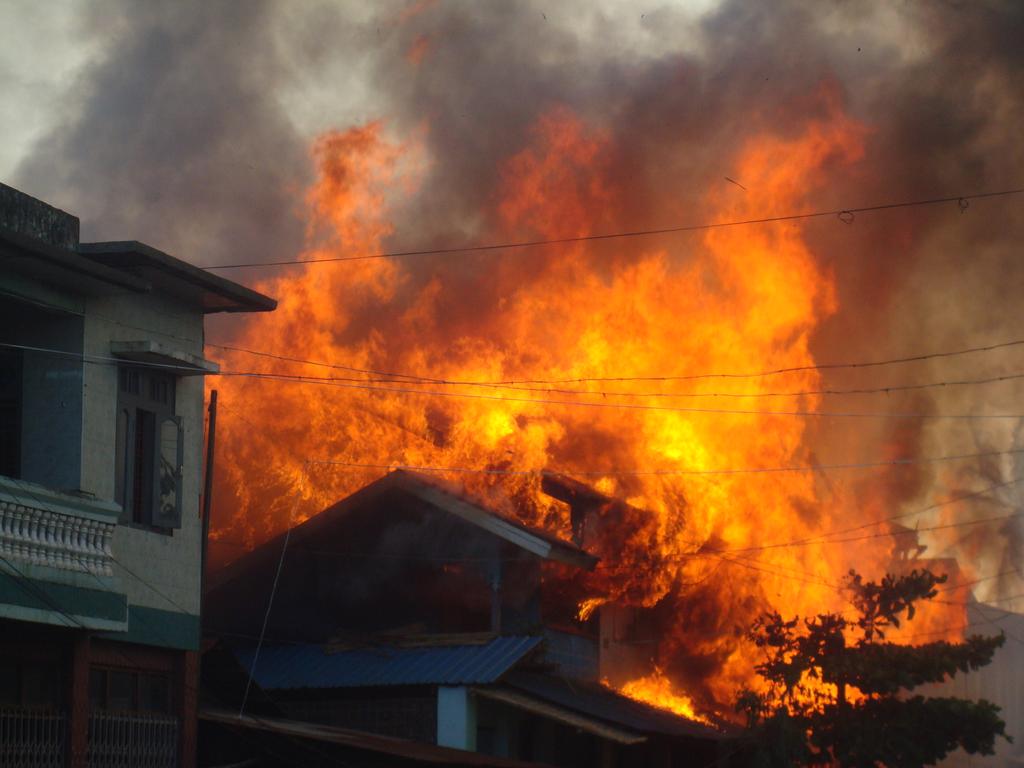
Memory of #Thein Sein government's preplanned violence in 2012 #Rohingya #Genocide: image via Aung Aung @Aungaungsittwe, 18 May 2015: image via Aung Aung @Aungaungsittwe, 18 May 2015
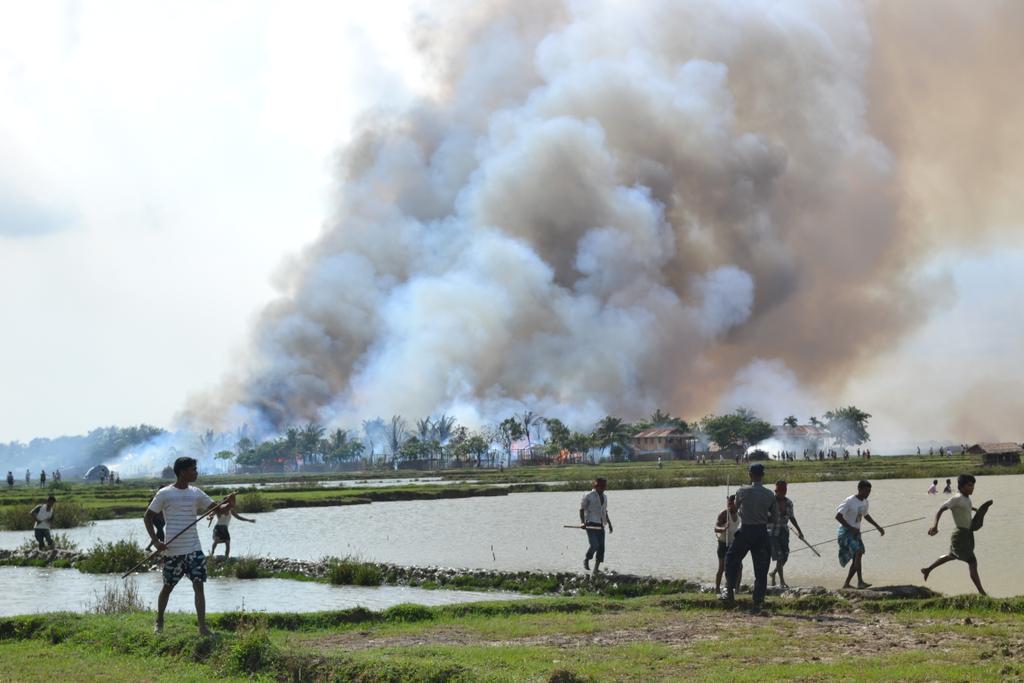
Memory of #Thein Sein government's preplanned violence in 2012#Rohingya #Genocide: image via Aung Aung @Aungaungsittwe, 18 May 2015

Memory of #Thein Sein government's preplanned violence in 2012 #Rohingya #Genocide: image via Aung Aung @Aungaungsittwe, 18 May 2015

Memory of #Thein Sein government's preplanned violence in 2012 #Rohingya #Genocide: image via Aung Aung @Aungaungsittwe, 18 May 2015
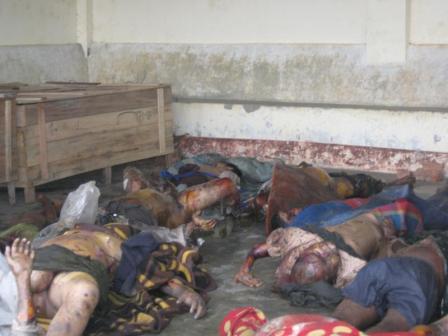
Memory of #Thein Sein government's preplanned violence in 2012 #Rohingya #Genocide: image via Aung Aung @Aungaungsittwe, 18 May 2015
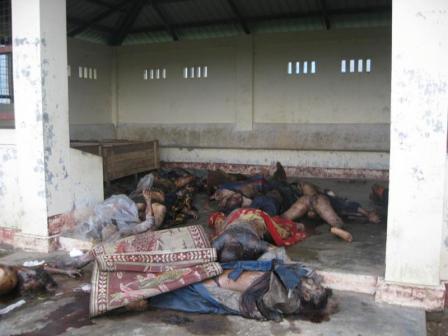
Memory of #Thein Sein government's preplanned violence in 2012 #Rohingya #Genocide: image via Aung Aung @Aungaungsittwe, 18 May 2015

Memory of #Thein Sein government's preplanned violence in 2012 #Rohingya #Genocide: image via Aung Aung @Aungaungsittwe, 18 May 2015
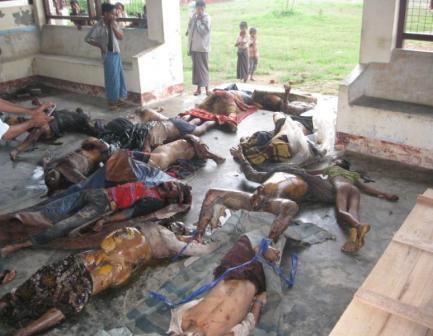
Memory of #Thein Sein government's preplanned violence in 2012 #Rohingya #Genocide: image via Aung Aung @Aungaungsittwe, 18 May 2015

Memory of #Thein Sein government's preplanned violence in 2012 #Rohingya #Genocide: image via Aung Aung @Aungaungsittwe, 18 May 2015

Memory of #Thein Sein government's preplanned violence in 2012 #Rohingya #Genocide: image via Aung Aung @Aungaungsittwe, 18 May 2015
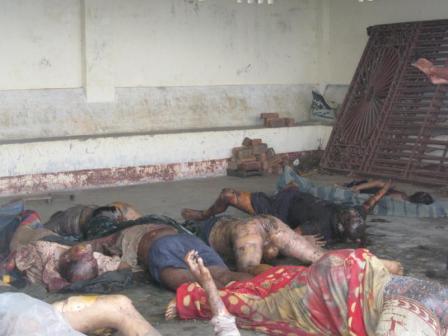
Memory of #Thein Sein government's preplanned violence in 2012 #Rohingya #Genocide: image via Aung Aung @Aungaungsittwe, 18 May 2015
Memory of #Thein Sein government's preplanned violence in 2012#Rohingya #Genocide: image via Aung Aung @Aungaungsittwe, 18 May 2015
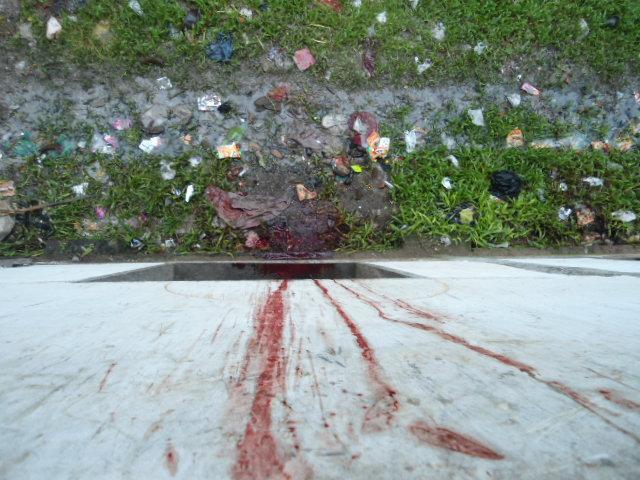
Memory of #Thein Sein government's preplanned violence in 2012 #Rohingya #Genocide: image via Aung Aung @Aungaungsittwe, 18 May 2015
Memory of #Thein Sein government's preplanned violence in 2012 #Rohingya #Genocide: image via Aung Aung @Aungaungsittwe, 18 May 2015
Memory of #Thein Sein government's preplanned violence in 2012 #Rohingya #Genocide: image via Aung Aung @Aungaungsittwe, 18 May 2015
Memory of #Thein Sein government's preplanned violence in 2012#Rohingya #Genocide: image via Aung Aung @Aungaungsittwe, 18 May 2015
Memory of #Thein Sein government's preplanned violence in 2012 #Rohingya #Genocide: image via Aung Aung @Aungaungsittwe, 18 May 2015
Memory of #Thein Sein government's preplanned violence in 2012 #Rohingya #Genocide: image via Aung Aung @Aungaungsittwe, 18 May 2015

Memory of #Thein Sein government's preplanned violence in 2012#Rohingya #Genocide : image via Aung Aung @Aungaungsittwe, 18 May 2015
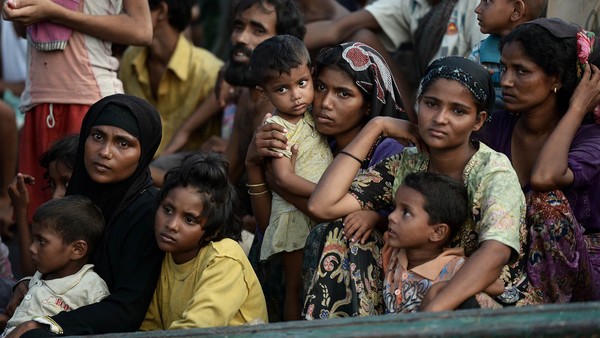
In the past few weeks, at least 6,000 refugees have been cut adrift in the ocean: photo by AFP via FT.com, 20 May 2015
Acehnese fishermen (R in boats) tow a boat of #Rohingya migrants in their boat (L) off the coast near Geulumpang #AFP: photo via AFP Photo Department @AFP photo, 23 May 2015










